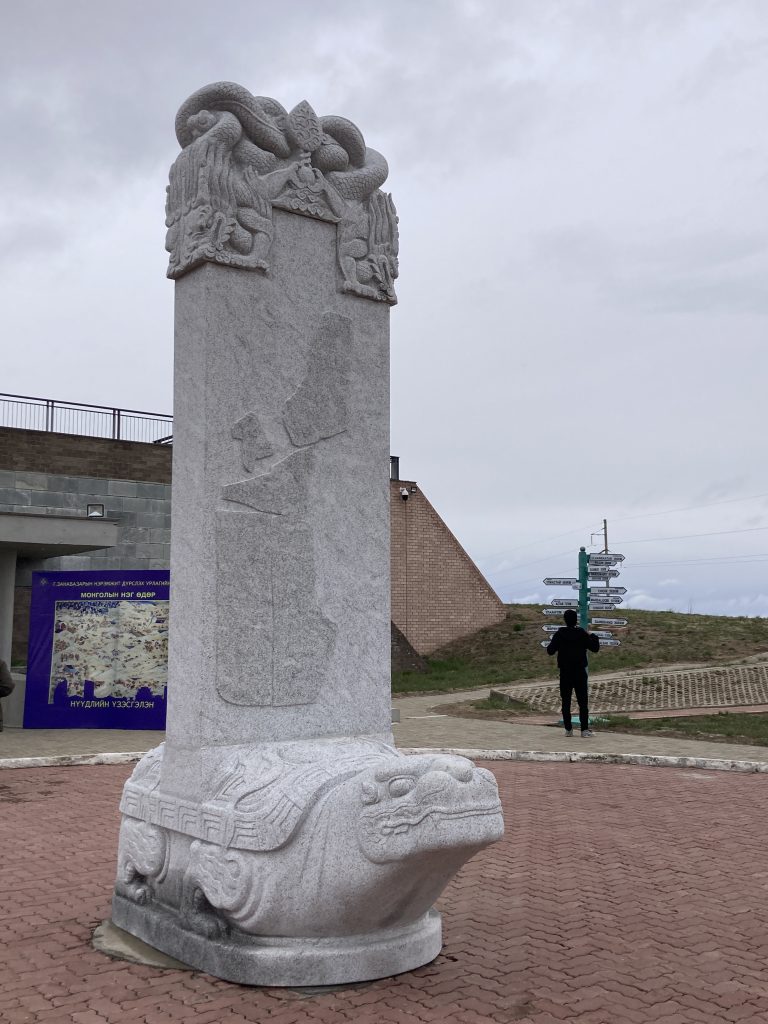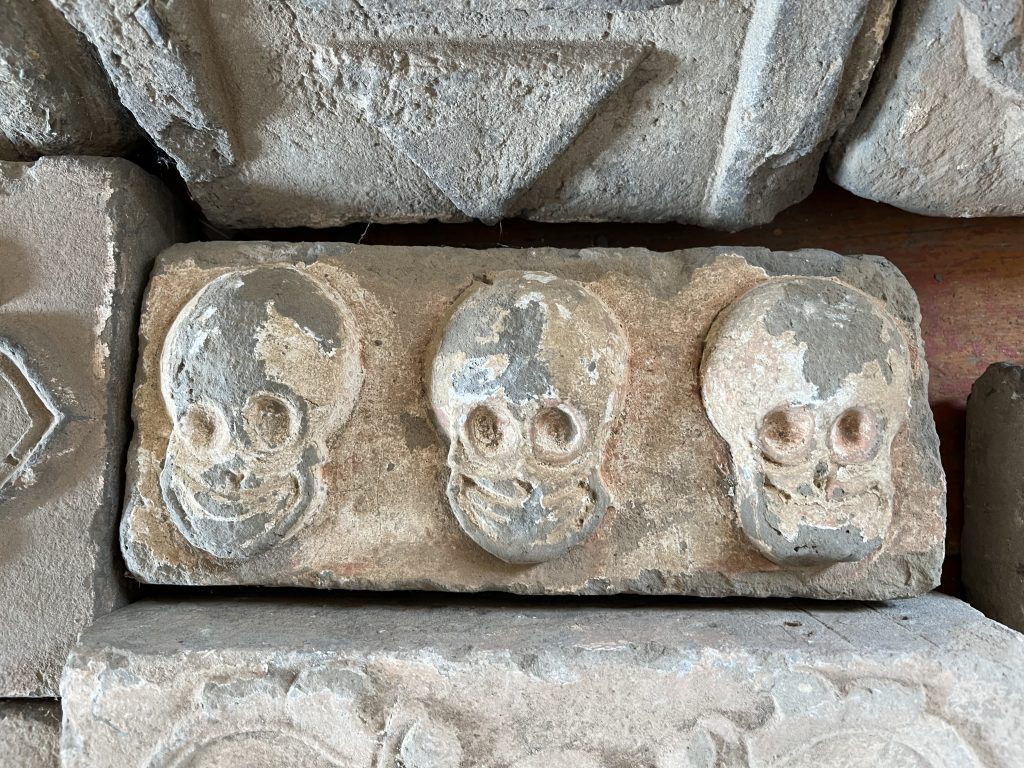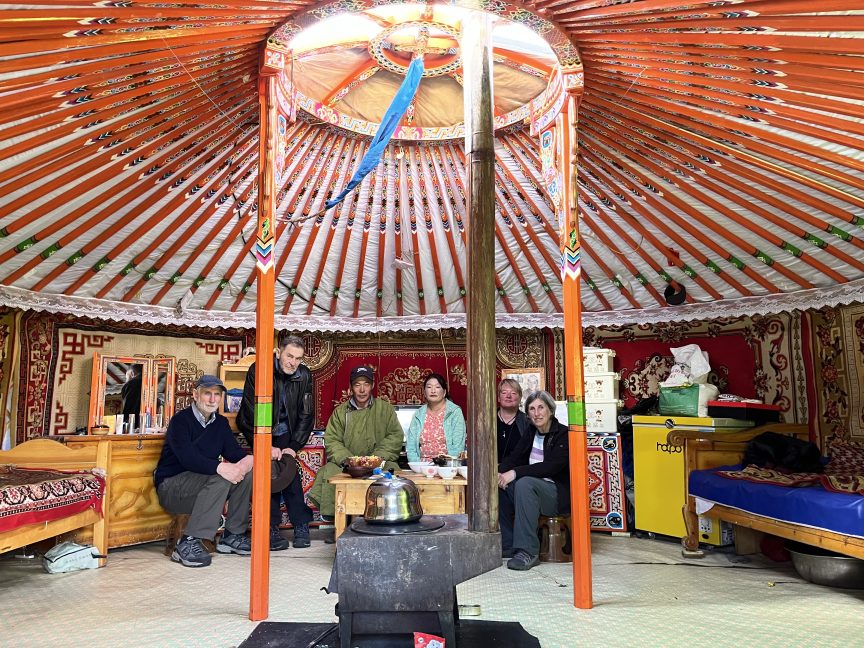by Fran Bryson
We travel in convoy. The tour company has provided with two comfortable 4WD Lexus – or should that be Lexi? Most of the Mongolian landscape is steppe or desert, and, when we finally clear the city, this region SSW of the capital, Ulaanbaatar, is no exception. The steppe is all low grass, softly undulating hills, and not a tree in sight. That’s despite that we just passed a sign that indicated a table would be found under a tree. No tree and neither, of course, was there a table.
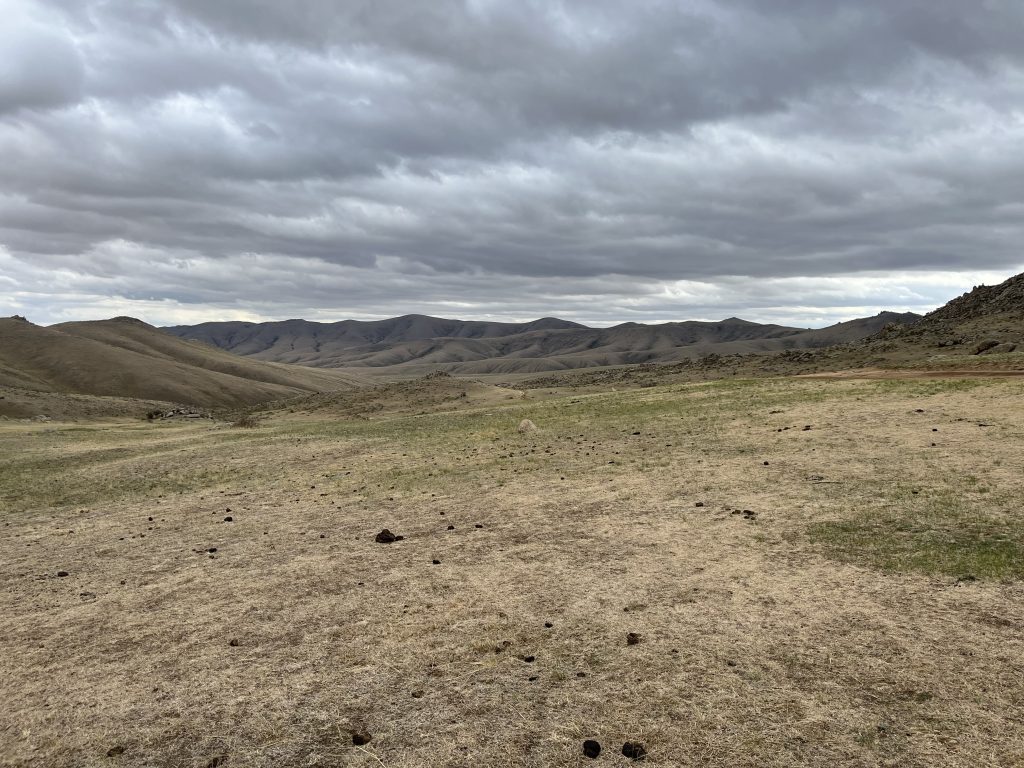
The power poles are wooden, fastened to concrete bases to better survive the extreme changes of temperature. The average temperature in the capital in January is minus forty. Yes, that’s minus forty and that’s just the average. When I comment to our guide that there seems to be an enormous number of cars (and, thus, traffic jams), he reminds me that taking one or more children to school in minus 40 without a car isn’t much fun. The poles are numbered, as is each kilometre we travel.
Flying in across the steppe a few days ago, the clouds made such deep, dark shadows on the ground below, it took me a moment to realise they were not patches of water. Each was the same shape as the cloud that made it. I had the rather simple, and perhaps obvious, thought: ‘There’s a lot of land out there with seemingly nothing on it.’ And that’s me coming from Australia, where there’s also a lot of land out there, with – at first glance – nothing much on it. I would need to train my brain to speak its language.
As the plane pulled up at the terminal, a guy in a high-vis vest and denim jeans vaguely waved a hand to direct the pilot whilst peering at his phone.
The bloke who picked me up at the airport drove a right-hand drive car. Mongolians drive on the right, so it took me a while to work out why I was slightly disorientated. Driving on the right, the steering wheel was not in the centre of the road but on the side.
A sign outside a Carrefour supermarket bade ‘Welcome to Mongolia Emmanuel Macron’. This was a few days since he, like many of the world’s leaders, was in Hiroshima for the G7 and other meetings. The car stopped soon after to let an unattended team of horses to cross the road.
As in so many countries now, the Buddhist monks have mobile phones. It seems incongruous but they keep them in an inside pocket of the yellow vests they wear under their bright red robes.
In Mongolia I have seen many Burger Kings, quite a few KFCs and no golden arches. I agree with one of my tour-mates that it’s refreshing.
As we are driven out of town in our two-vehicle convoy, I spot a dune buggy that Mad Max would have been proud of. Later in the week, we will cross the Gobi Desert where a vehicle like that might come in handy.
The Cyrillic script in this country overwhelms my brain. I learned some Russian a few years ago but I can’t, at first, remember the alphabet. There is very, very little of the graceful Mongolian script I was expecting. There are quite a few English words on buildings though. Of these, the prevalence of ‘restaurant’ and ‘Hotel’ is wildly eclipsed by ‘Karaoke’ (which is probably not an English word but is spelled, here, in our alphabet). Turns out one of the reasons my brain couldn’t compute most of the Cyrillic is that the script might be used for Russian in Russia but here it’s used for Mongolian words, which I am entirely unfamiliar with.
Three times, heading out of the city, I spy mini merry-go-rounds and other toddler-friendly fair-rides by the side of the road. Not one was operating, but they were colourful.
Mongolian traffic cops take their jobs seriously. Our car is pulled over in morning peak-hour traffic, holding up one busy lane, and the rego and driver’s license checked. I realise that’s also what I observed yesterday on a main thoroughfare, before ducking into a convenience store called ‘Nice to CU’. There’s one such store every couple of blocks. They are the Mongolian version of the zillions of 711s you see in Japan or Thailand. Half an hour later, the car is stopped – well, the car slowed, I don’t think it actually stopped – long enough for our driver, Barah, to shoot a quick outward breath in the general direction of the breath-alysing machine held in the vicinity of the driver’s side window by another cop.
On the way out of the city – which is less of a traffic jam than our guide predicted – we pull up at a supermarket. More a ‘hypermarket’ that reminded me of Sam’s stores in the USA where you can buy items cheaply and in bulk. Nearest the entrance are several long well-stocked aisles of just about every sweet you can imagine. At first, I resisted grabbing a Mars Bar – with the brand in Cyrillic – but later succumbed.
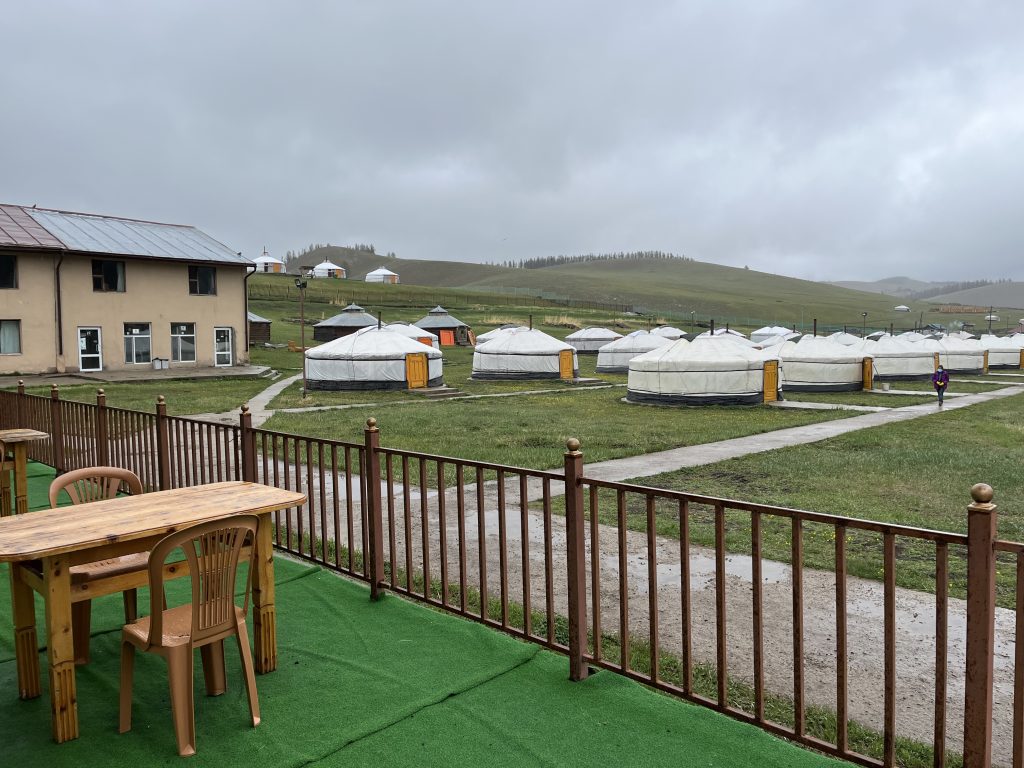
We stop at our first ger camp, the tourist kind, not entirely authentic. Gers are round tents. I have one to myself, one ger with three beds. This is a commercial outfit with maybe twenty-five or thirty gers, a restaurant building, an information ger, and a shower block. The main building reminds me of travels in similarly weathered terrain: that of Patagonia. There, wooden ‘refugios’ have been built, at day-trekking intervals, for people to bunk in. But the gers themselves are quite different, being tents rather than wooden constructions with bunk rooms. Gers can be folded up and taken down to be moved quite easily when the pasture runs out for the nomads’ animals, or the seasons change, though the ones we are staying are here, our guide tells us, here year-round. After dinner, the fire the staff light in the stove in the centre of my ger is so hot I have to open the door to cool down. This takes a while and lets in the rain.
Ger entrances face south, to take better advantage of the sun. It takes us until day five to see much sun after we leave Ulaanbaater, a city that , apparently, the sun shines upon 300 days or more each year. Our guide, Gannah, gave us a few briefing points on Mongolian manners: when entering a proper ger, we are to go to the left. Residents will go to the right. If we accidentally step on someone or kick them, we must immediately turn, apologise, and shake their hand. I hope I don’t need that tip.
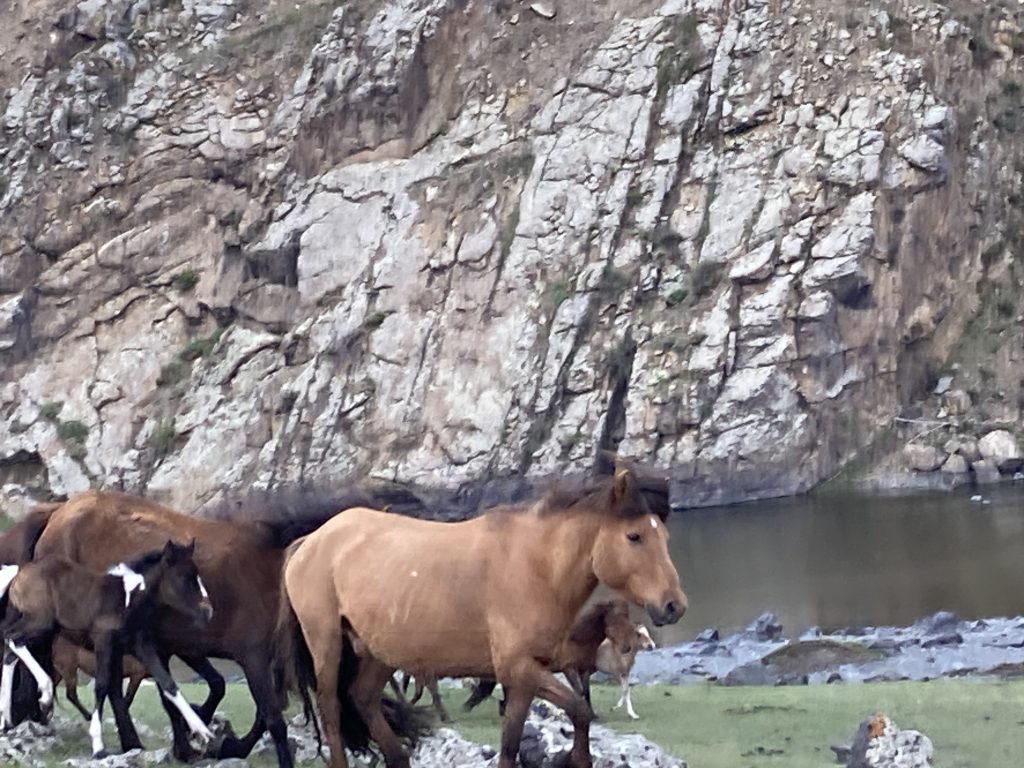
Hustai National Park is home to tarki – aka Przewalski’s – horses that were extinct in the wild and have now been bred in captivity and released back onto the steppes and are, by all accounts, doing very well for themselves. They are named for the Polish biologist who first studied them.
Some of the other wildlife include marmots – bigger than I thought they’d be – white-tailed gazelles, deer, falcons, kites, buzzards, vultures, a species of squirrels and another of chipmunks. There is also native dogs that survive mainly in captivity.
We passed a ger inside a wooden fence – to keep the livestock in – with a satellite dish next to the south-facing door. Some gers have a little rectangular room attached that I think must be an en-suite. En-suites would be quite handy in minus forty I imagine.
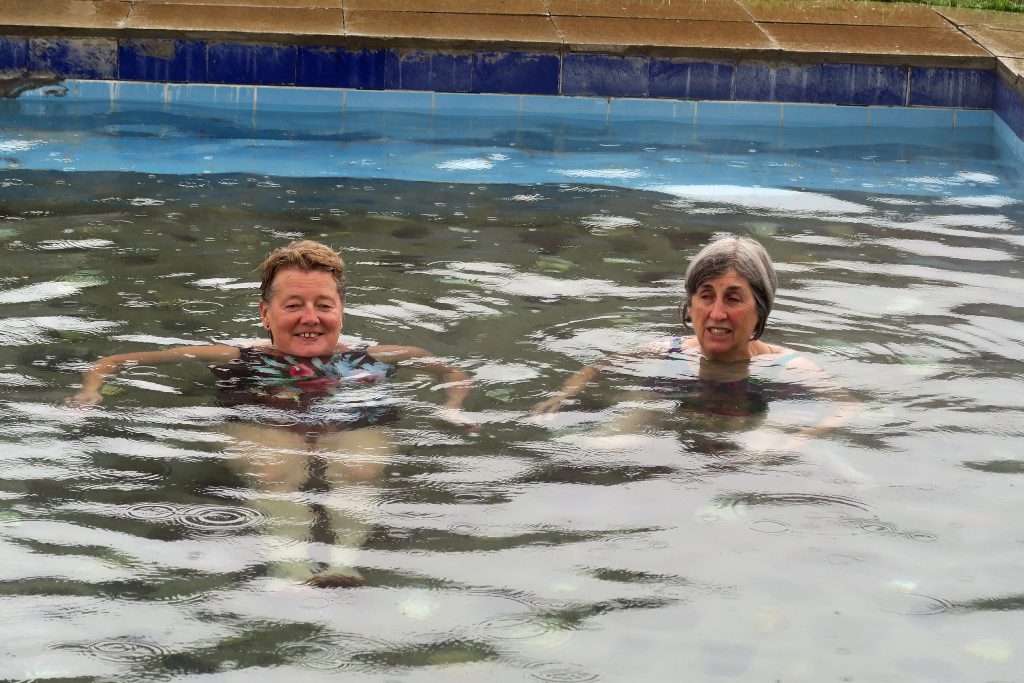
Our first night, I was given the ger closest to the toilets that were about twenty-five metres away. I thanked our guide Gannah for his foresight of my menopausal bladder. My two female trip-mates are envious. The second night was our most luxurious camp (to date) with lovely en-suites and very hot water. Our third and fourth night were spent in a camp with a hot spring. Here’s Barbara and I in the steaming pool at the camp we stayed at.
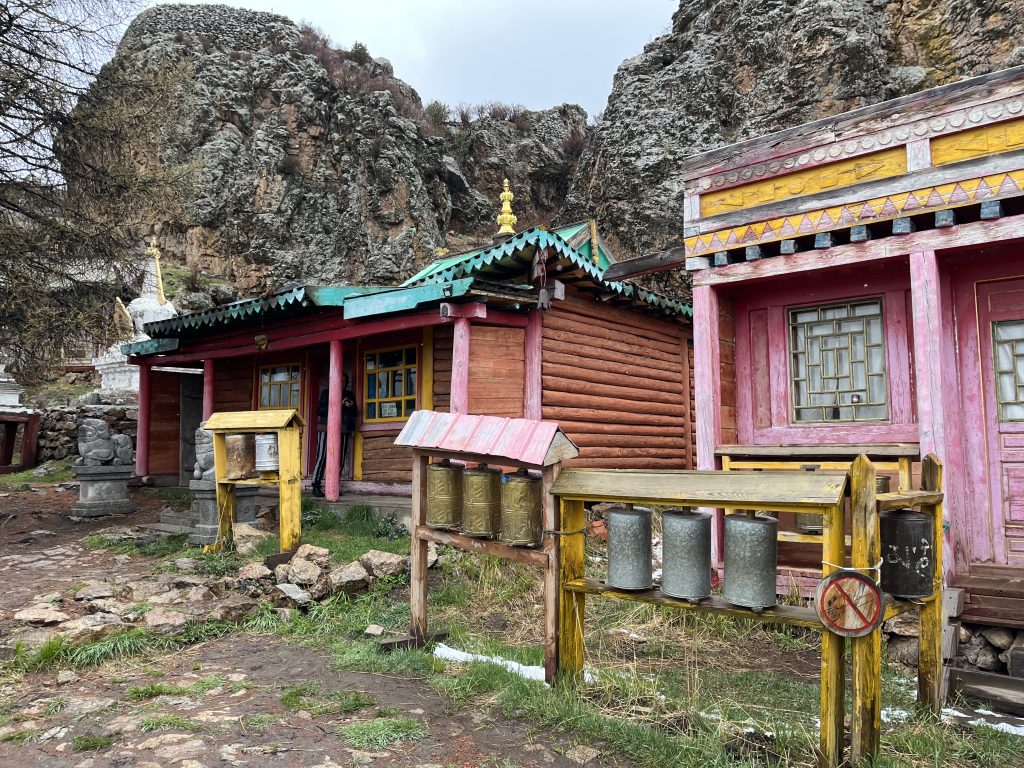
By day three I’ve overdosed on Buddhist temples. It’s the same as cathedral fatigue many get when in Europe and the UK. But each temple does seem to be a bit different and usually the monks give us a talk that Gunnah translates into English. Our divers, Barah and Meager (probably I have spelled these incorrectly) speak no more English than we speak Mongolian. But sign language is effective.
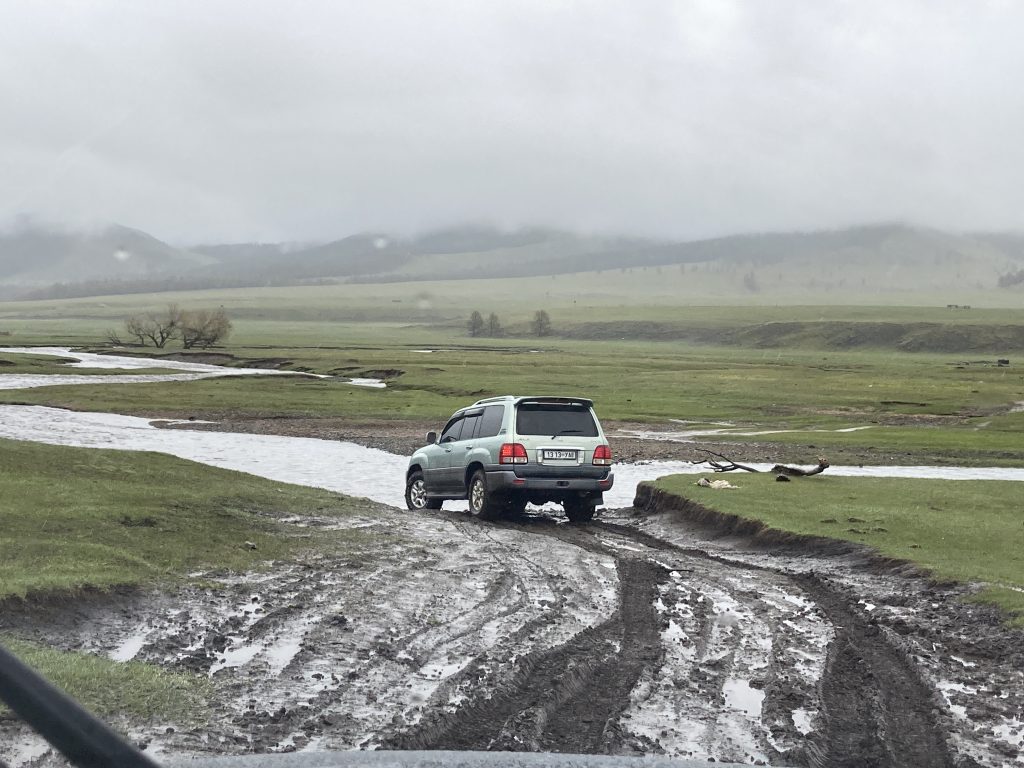
Our 4WDs are driven purposefully but carefully because at any moment a goat, a sheep, a horse, pig or cow, might take it into the heads to cross the road or a whole herd might. Usually, I can brace myself for sudden changes in direction or braking by watching the ground – there’s not always a road – ahead of us and to the left and right. But entering one town, a couple of pigs took Barah by surprise, my back was wrenched. Of course, it would have been wrenched more if we’d hit them. And then there was mud.
We stop for a toilet break at a roadhouse that has a convenience store, restaurant and blocks of western-style toilets. The sign above the door needs no translation: two stick-figures, one wearing a dress, stand with their legs crossed and their hands over their privates. ‘Exactly how I feel,’ I comment to Gannah.
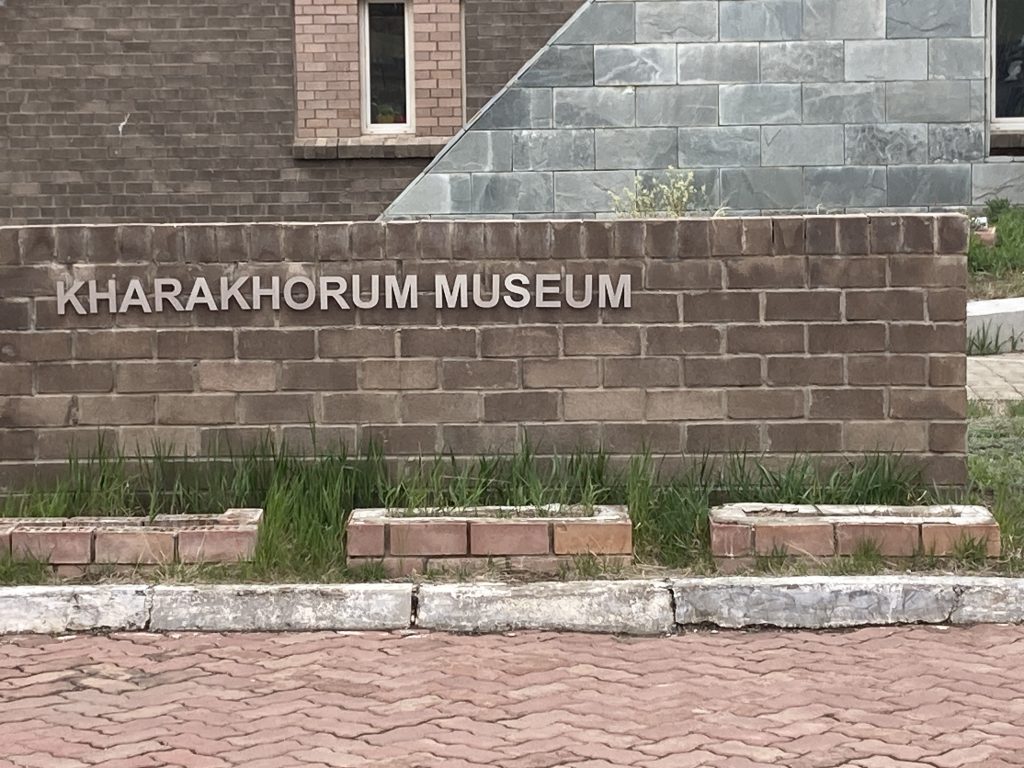
Across Mongolia, many of the towns and temples – including the old capital, Kharkhorin – were pretty much destroyed by the Communist invasion. Some have been reestablished as museums. One such has 108 small peaked stuppas that look like mini-temples around the walled perimeter of the monastery that used to be home to 1500 lamas or monks. These days monks study at a Tibetan university either in Mongolia or – perhaps for the lucky ones – in Tibet. There are Buddhist schools too. We were scheduled to see one, but it had closed for the summer holidays.
A map of Mongolia showing its archaeological sites is near the entrance to a small modern museum of showcasing region’s history. Nearby an 7th Century aristocrat’s tomb was discovered, it had four mural-ed chambers, in which more than 400 objects – including figurines, belt ornaments, and the like – were buried with the one cremated body whose ashes were found in a silk bag within a painted coffin.
I won’t go much into Mongolian history here – you can Google it – but the words ‘Kahn’, ‘Bodg’, ‘Chingiss’, and ‘nomad’ become more familiar as we travel. The former two signify kings or leaders. I read that there are around 35,000 statues of Chinggis Khan in Mongolia. But I am yet to see – or perhaps recognise – a single one.
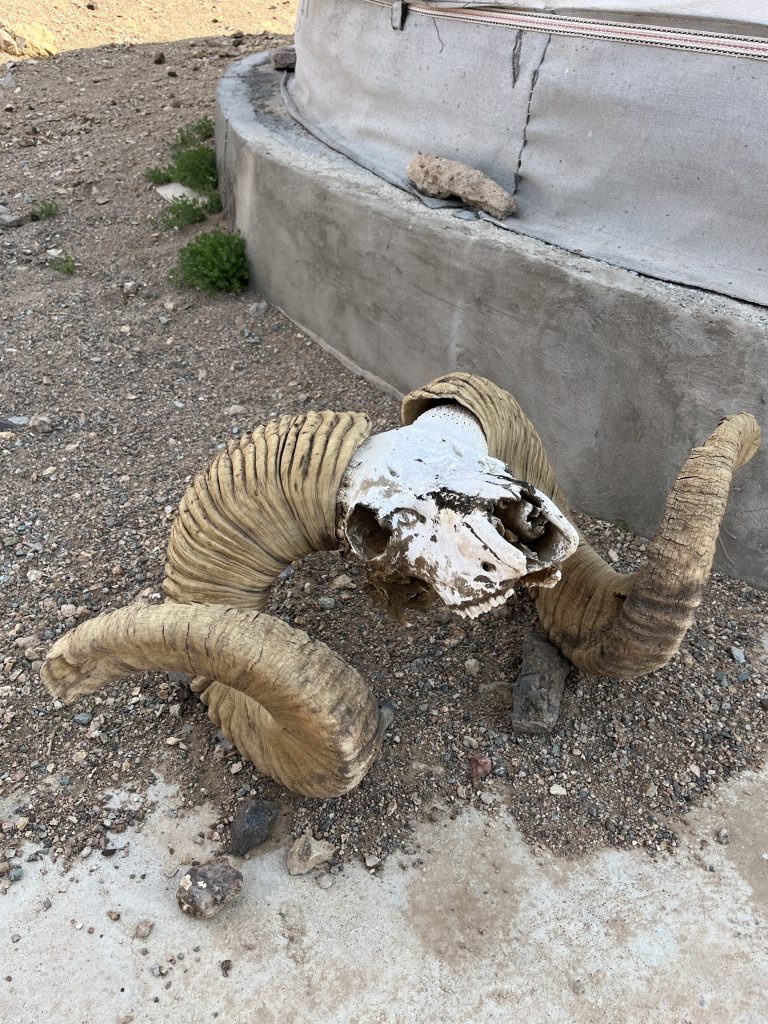
Driving across the steppe I think ‘wasn’t this the real-life setting for Clan of the Cave Bears?’ Then I begin spotting empty vodka bottles lying by the side of the road. I remember reading that during the Communist occupation, one of ways Mongolians were – derogatorily – referred to was as big vodka drinkers. That coming from Russians who, in my experience, can put away more than a little of the spirit.
Here are some interesting things I found in museum in Mongolia. Click here for Part Two of my trip around Mongolia.
